While the banjo did not get its start in America, it has certainly found a way into the culture of American music. I have had a fascination with this unique sounding instrument for many years. When our travels brought us back to Oklahoma City, it offered an opportunity I would not pass up a second time. Ever since my youth, I have watched banjo players picking and grinning, while evoking melodious tunes. A visit to the American Banjo Museum would offer a peek inside the history of this mysterious musical instrument.
We want to thank Visit OKC and the American Banjo Museum for their hospitality. Rest assured that all opinions are our own.
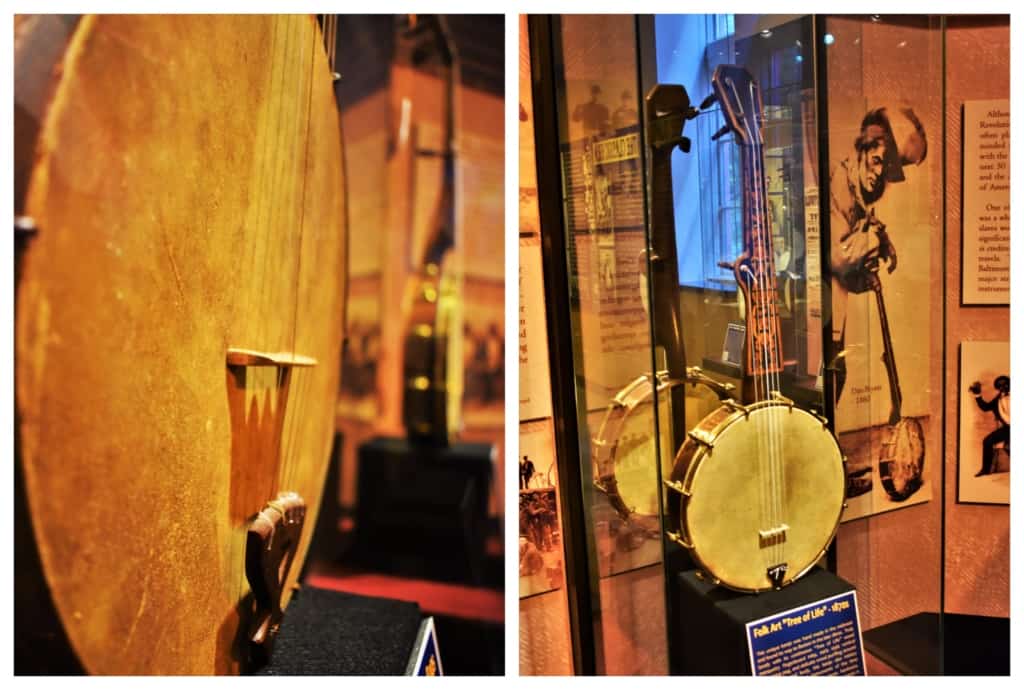
Coming to America
The earliest known origins of the banjo started in Africa. The instrument is composed of four, five or six strings and a membrane-covered frame. It found its way to the Caribbean, in the 17th Century, with the introduction of enslaved people. Historical references can be found dating the use in North America to the 1700s. The banjo would often be heard on plantations, and by the mid-1800s would find its way into mainstream American culture. Prior to this, it had been primarily a handmade instrument. Gaining notoriety in minstrel shows had helped the banjo capture the interest of the public.
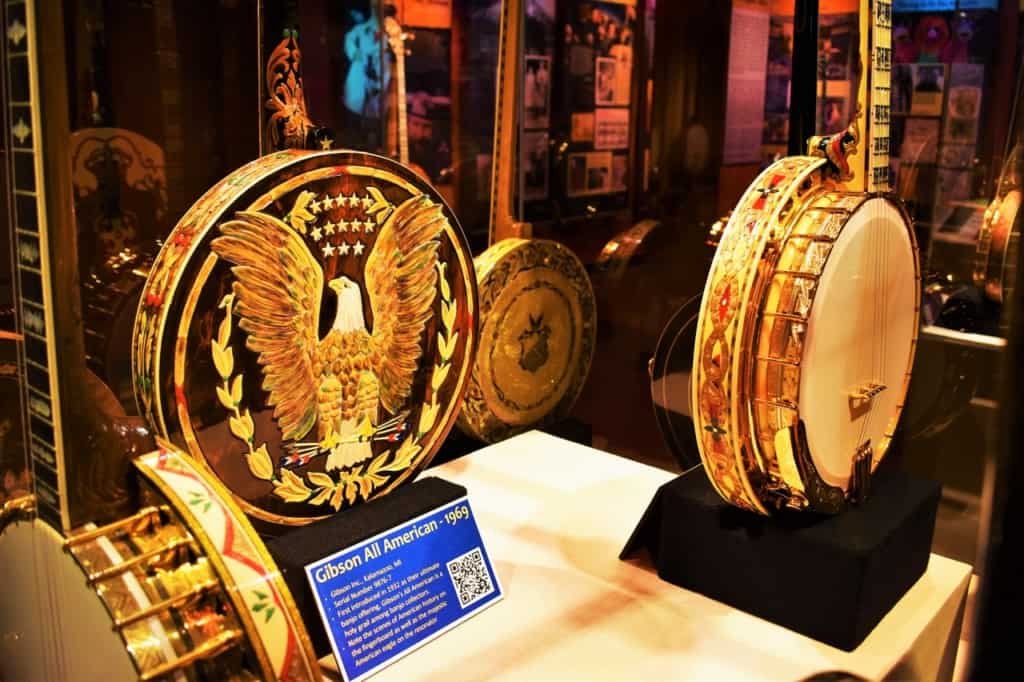
Picking and Grinning Americana
The Roaring Twenties was the golden age of the banjo. The instrument played a prominent role in American life. Jazz was all the rage, and banjos were a key instrument in the genre of music. The American Banjo Museum has a wonderful collection of banjos that showcase the artistic side of the designs featured in this era. It’s hard to imagine so much work going into the side of the banjo that rested against the body. It just shows how much people loved their instruments.
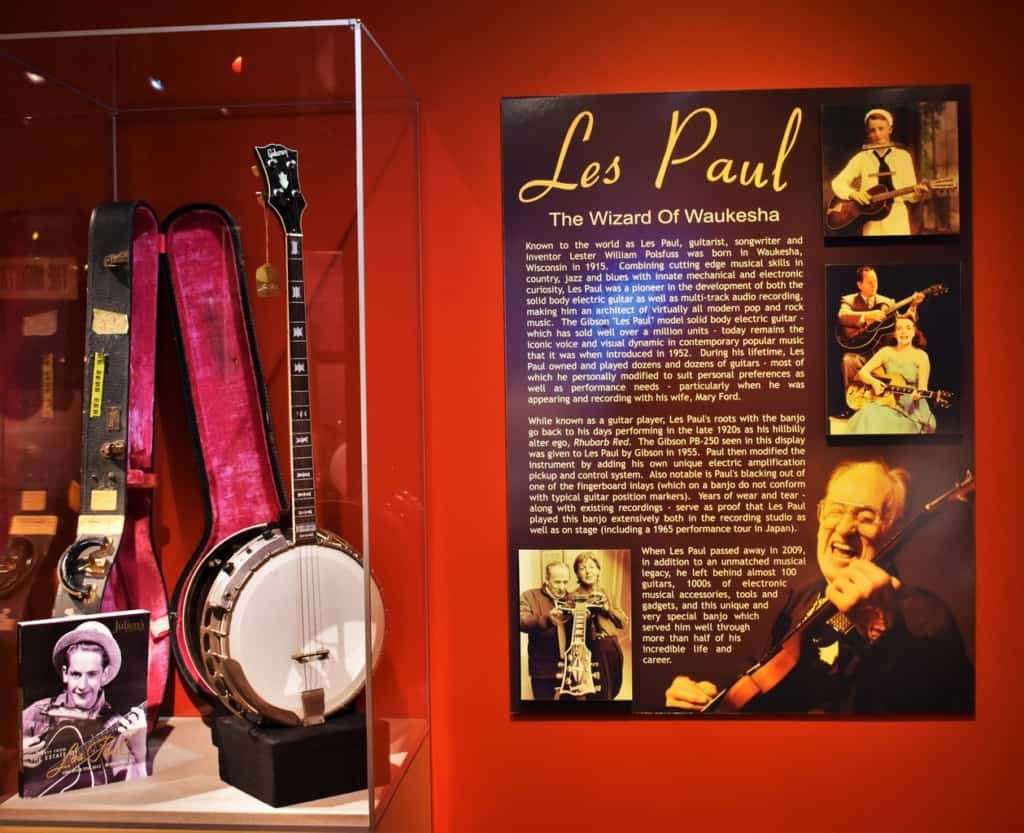
Rhubarb Red
As we explored the American Banjo Museum, there were plenty of familiar names and faces popping up. One of the greats in the guitar field is Les Paul. Little did we realize that he has his own connection with picking and grinning. In the 1920s, he performed in a duo, named Sunny Joe & Rhubarb Red, which featured hillbilly music. This genre was extremely popular at that time, and Les would often be found playing the banjo, among other instruments.
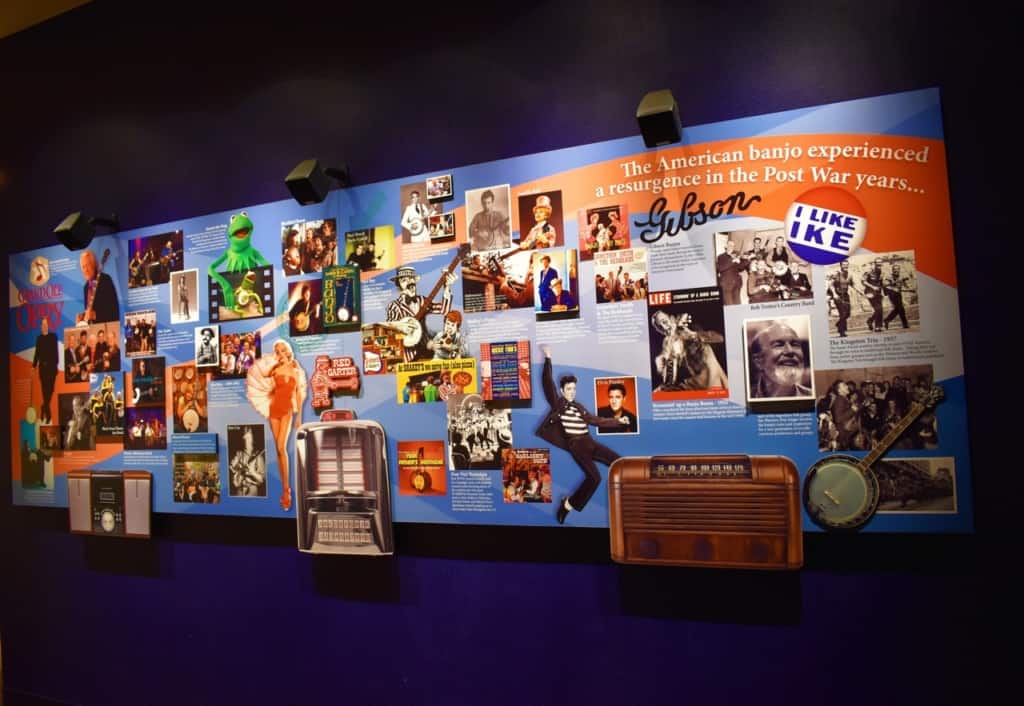
Ingrained in American History
Picking and grinning moved farther into American culture and was often associated with country music. After World War II ended, the banjo once again saw a rise in popularity. Many artists would utilize this instrument in their groups, as they performed at The Grand Ole Opry. Banjo players would be as integral to this genre of music, as guitar players were to the fast-rising Rock and Roll. In fact, there were many “Country Shredders” who would become easily recognizable.
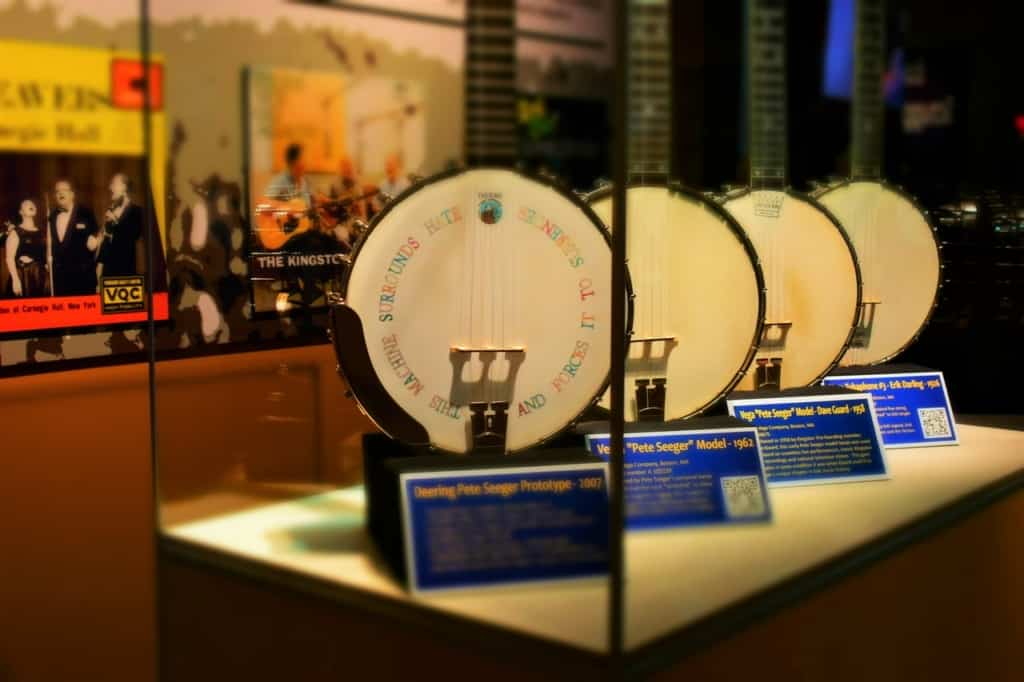
A Familiar Name
Pete Seeger was a popular folk singer in the 1940s. As a social activist, he wrote many songs that have found their way into American history. You may remember “If I Had a Hammer” or “Turn! Turn! Turn!”, which were recorded by many artists. While visiting the Woody Guthrie Museum, in Tulsa, we found that they had a traveling exhibit on Pete Seeger. The iconic message on the skin of his banjo was easily recognizable as being from this important artist. (You can read about the Guthrie Museum here.)
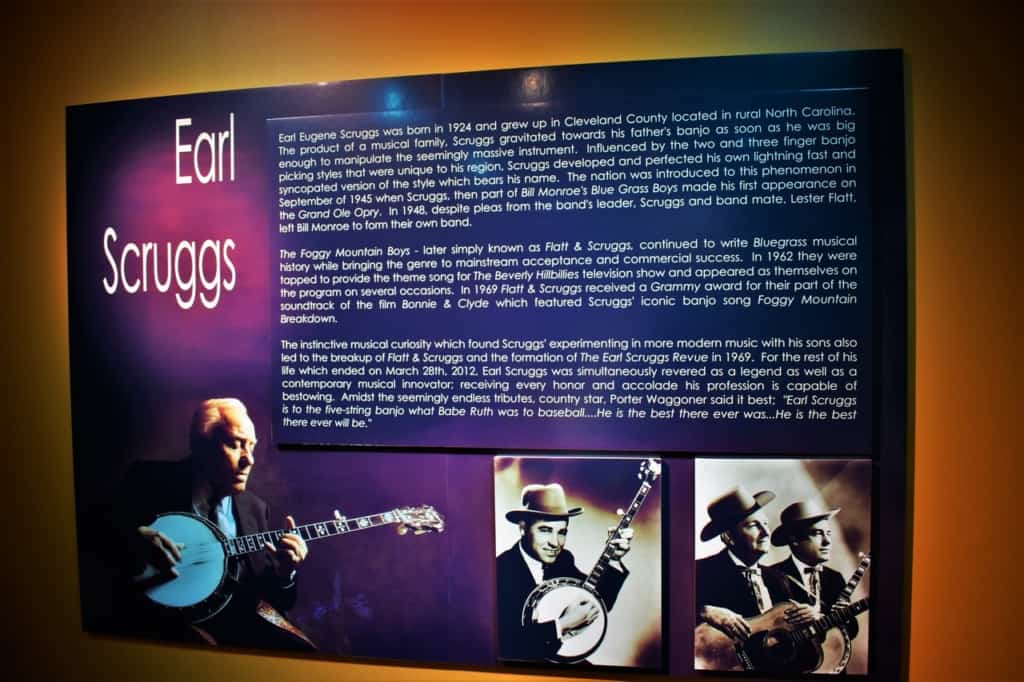
King of the Banjos
When we hear the name Earl Scruggs, it immediately is associated with the banjo. Arguably the greatest banjo player of all time, he revolutionized picking and grinning. Many artists had utilized a one or two-finger picking method, but Scruggs introduced the three-finger style. For decades, the banjo had been a back-up instrument used to provide rhythm to a band. This new style of picking brought the banjo up front and center, as it allowed artists to do solos. The music of Scruggs can be found in movies and television shows, like The Beverly Hillbillies. Most of us can recognize “Foggy Mountain Breakdown” when it plays.
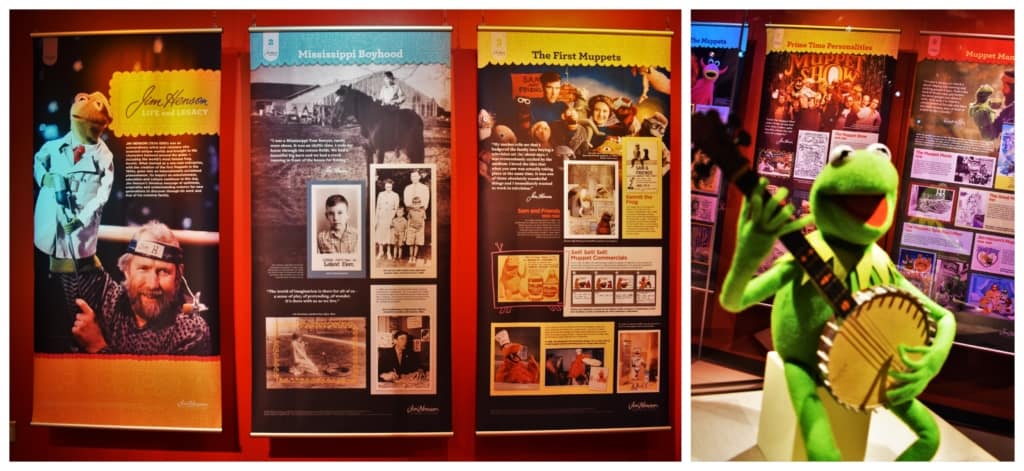
An Unlikely Entry
During our visit, we were lucky enough to catch the tail end of the Jim Henson special exhibit. In this rotating exhibit, there was a ton of information about this visionary. It brought back memories of watching The Muppets on television, during our youth. The exhibit told about his life from boyhood through his passing. The early days of puppeteer work, on Sesame Street, helped him develop the characters that would later come to life in his movie, The Dark Crystal. He was certainly a special kind of storyteller.
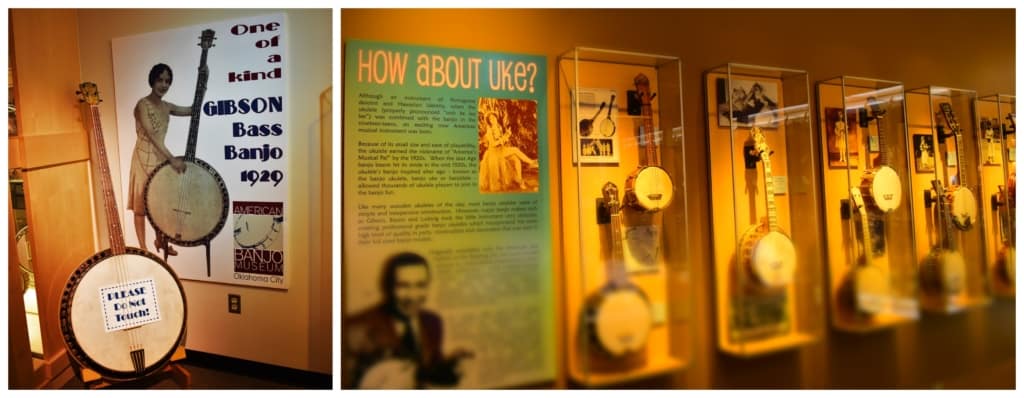
Picking and Grinning Alternatives
As we made our way onto the second floor of the museum, we found a few oddities in the banjo world. The huge bass banjo seemed like quite a weird idea, and it would be interesting to hear it played. I guess it wasn’t meant to be. Nearby, we found a series of display cases filled with ukuleles. Not being terribly familiar with this instrument, our minds drift to pictures of Hawaiian dancers playing this instrument on the beach. Little did we know, there is an entire series of professionally crafted ukes designed like miniature banjos.
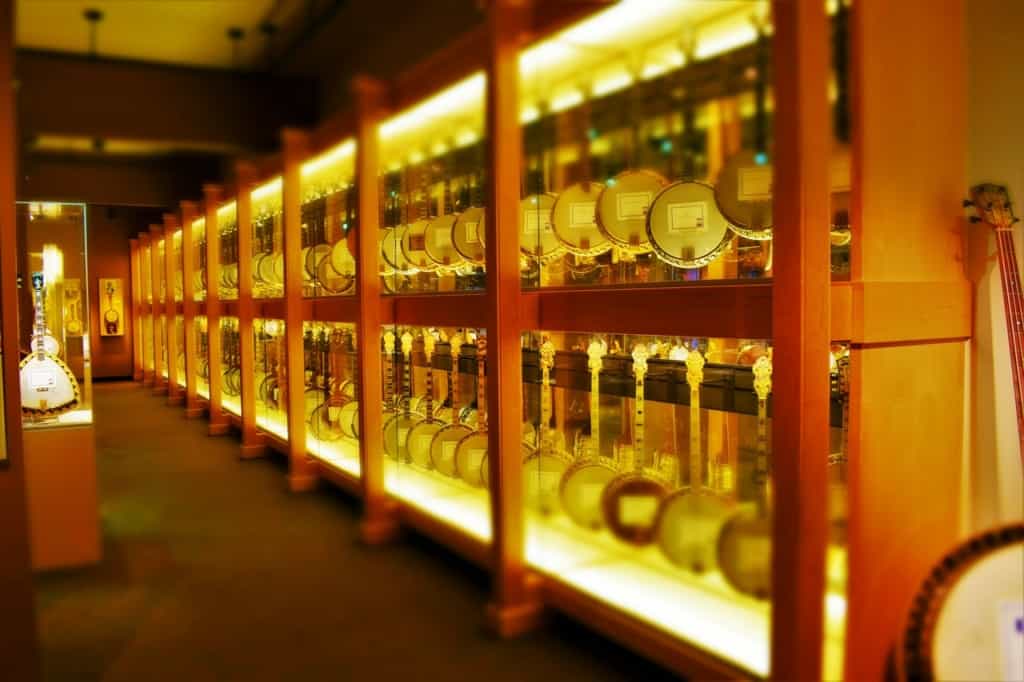
Gallery of American Treasure
Upstairs we also found a large collection of banjos from the 1920s and 1930s. These gorgeously gilded instruments were so interesting to view. From a cursory glance they looked similar. Once we got closer, we could see how each has its own unique design. It amazes us that there can be so much variation in this one magically musical creation. Do you enjoy watching the picking and grinning of banjo players?


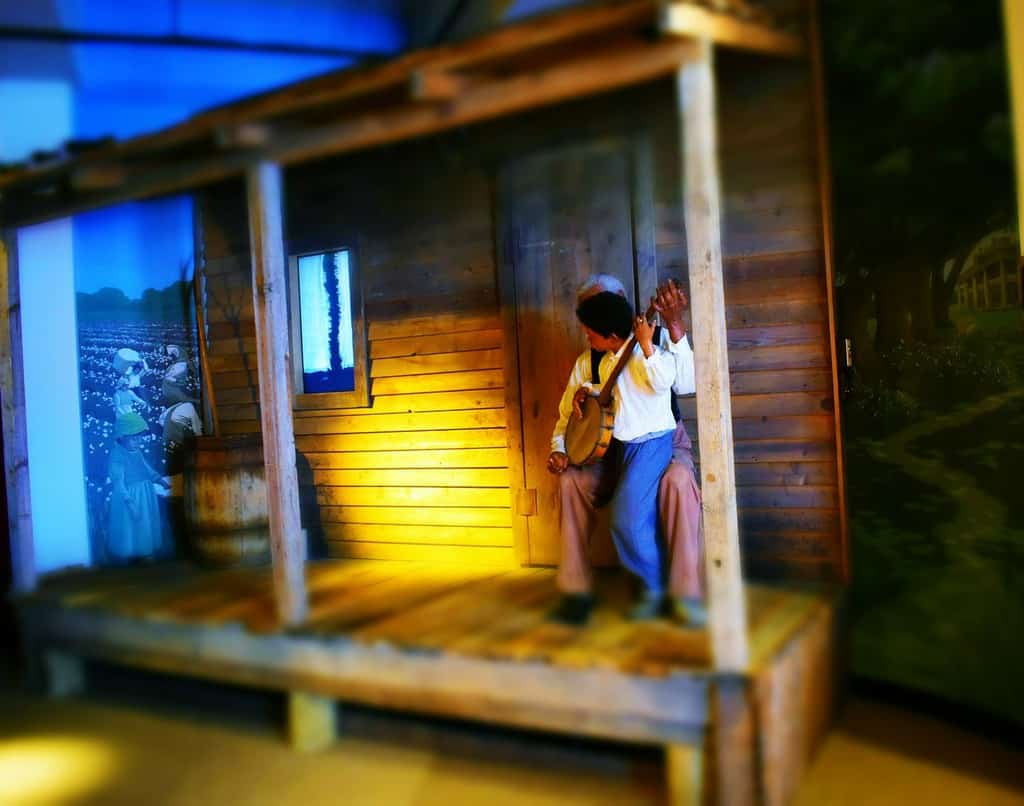

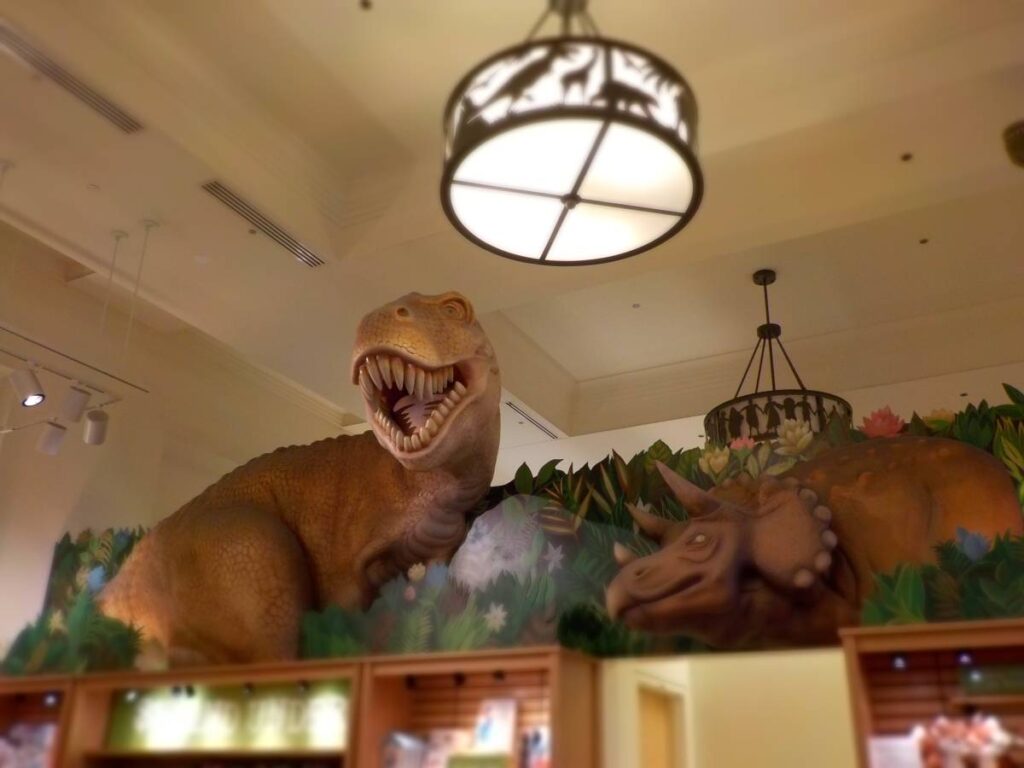

That is quite intetesting. Since we pass by Oklahoma City when we go back to Bill’s hometown Pittsburg, Ks, we will stop to look for this!!! Thanks!
Hope you enjoy your visit.
Just love banjo, played by the right players. You forgot to mention Deliverance, though. Was that in the museum? Creepiest banjo sequence ever filmed.
I didn’t see anything on Deliverance. This was focused on the history of banjos.
Thanks so much for sharing this great post about the Banjo Museum of Oklahoma City. that looks like a great place to spend the afternoon.
It certainly is. The history of this unique sounding instrument is fascinating.
This sounds like a great museum! I can’t believe I haven’t heard of the American Banjo Museum before. My step-mother would love it. I’m going to share this with her as a stop on one of her RV trips. Hope I have the chance to visit the museum, too. My attention keeps being drawn to Oklahoma City lately. Maybe I need to think about a road trip there myself!
Hopefully you will have a chance to see it in person.